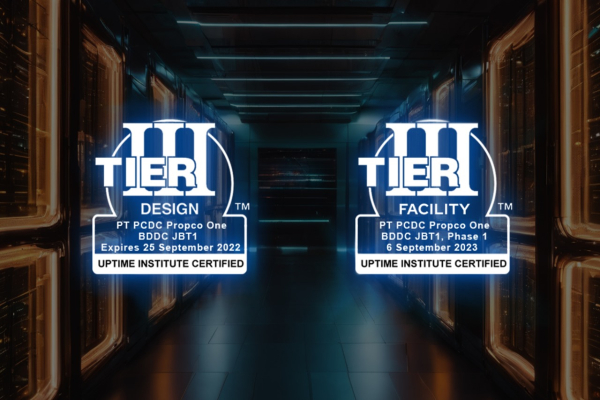Why are More People Choosing Tier III & Tier IV Data Centers to Colocate With in Indonesia?
- News Friday, 15 December 2023 09:53 • 5 minutes

The rise of the digital economy has pushed companies to cope with the rising demand for online services, especially in Indonesia. The most sensible course of action for businesses, with the rising incoming data, is to build a data center.
As a result, in parallel with the increase in online services, the demand for data centers rose as new information is updated every second 24/7. This also means that being offline for a good 5 minutes or less is no longer an option as it translates to significant financial loss for companies.
Higher Demand in Tier III & Tier IV Data Centers
Some businesses built their own data centers as it is closer to where they work, and is easier to manage.
However, most of the company’s buildings are not purposely built for data centers. They need plenty of mandatory requirements, space, experts, resources, and location to build and maintain a data center on their own as the company grows. Building one without the requirements will leave them more vulnerable than they should be.
Companies are, thus, turning to Tier III or Tier IV data centers to manage their data centers effectively, and many firms in Indonesia are joining this wave.
According to Mordor Intelligence, demand for Tier III and Tier IV data centers in Indonesia has recently increased. It was found that in 2022, the market share of tier iii data centers has over 50% of the market share and will reach an IT load capacity of 652.6 MW by 2029. Tier IV data center segments are also facing a similar growth pattern, with an expected growth of 25.9% by 2029.
Due to their high-level features that can withstand all-nighters for long-term operations, it is no wonder why businesses turn to these types of data centers to colocate, and why companies in Indonesia are choosing them.
Unparalleled Reliability
These data centers have high power redundancy.
Unlike Tier I and II data centers, Tier III and Tier IV are designed for high levels of reliability and uptime. Classified by Uptime Institute, and written previously, Tier III has an uptime SLA power of 99.982%, whereas Tier IV is slightly higher with 99.995%.
However, there are cases where some Tier III level data centers like Bersama Digital Data Centres (BDDC), offer an SLA grade of 99.999%, higher than Tier IV’s SLA.
As a result, according to Phoenixnap, the annual downtimes for Tier III and Tier IV data centers are usually 1.6 hours or less. Tier IV data centers could even take less than 27 minutes for downtimes. This shows that these types of data centers do not take downtime lightly, and would try to lower the risk of any power outages.
This is because Tier III and Tier IV data centers are equipped with advanced technologies that are concurrently maintainable with an alternative distribution path in case one power goes out.
Robust Security Measures
Most Tier III and Tier IV data centers are designed and equipped with extremely high-security levels to protect mission-critical data. Such measures they’ve gone through include installing surveillance systems, biometric access controls, and comprehensive security protocols. This process is to help secure the physical security of the data center, whether it’s from natural disaster or theft.
Energy Efficiency
Today's businesses are looking for data centers aligned with environmentally friendly goals.
Tier III and Tier IV data centers are built with energy efficiency in mind. Some data centers like BDDC have cutting-edge technologies to power such technologies as green refrigerants, rainwater management, and green energy usage, for which they have won an award at W.Media for this section.
About Bersama Digital Data Centres
Bersama Digital Data Centres (BDDC) is a Tier III and Tier IV in-town carrier-neutral data center platform where local and global enterprises in Indonesia collocate and interconnect their digital infrastructure in one integrated ecosystem. Our sites are strategically located and highly interconnected in the Jakarta area, enabling the cloud to function seamlessly to assist the operations of enterprises.
